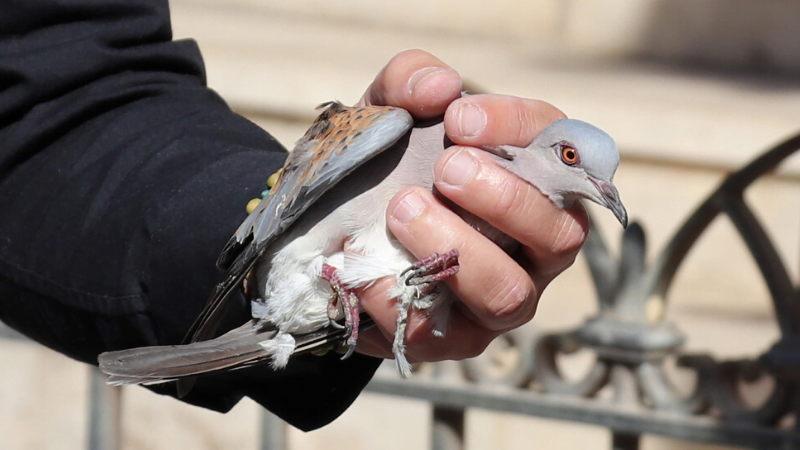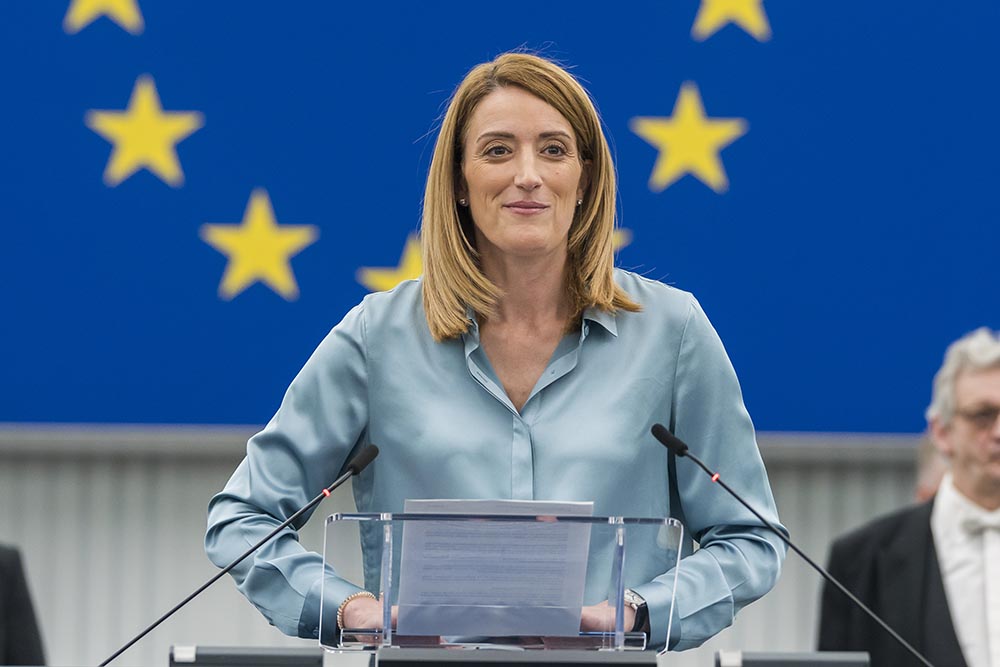The chilling video (below) released by Birdlife Malta last Friday constitutes the kind of court-grade evidence that the European Commission could take to the European Court of Justice (ECJ) and shut down Malta’s spring hunt for good.
The proof is incontrovertible: instance upon instance of hunters intent on illegal hunting documented in footage by two Birdlife teams is evidence that illegal hunting has been rife this spring. In fact, the signs this year became apparent even before the season formally opened.
Nicholas Barbara, Birdlife’s conservation manager, has told The Shift that illegalities this year were as widespread as 2012 – a time when the European Commission was requesting the ECJ to shut down Malta’s spring hunting season. That case was abandoned by the Commission after Malta introduced enforcement controls on spring hunting.
Although those controls are still technically in place, Birdlife’s video has exposed a charade in terms of enforcement. This – together with other moves by the government that facilitate the hunting of endangered turtle doves – has changed the game according to Barbara.
“The manner in which the derogation on spring hunting has been implemented and what we have seen this season constitute grounds for the EU Commission to initiate infringement proceedings against Malta at the ECJ,” Barbara said.
What’s the spring hunt derogation and what is huntable?
Spring hunting is banned under the EU’s Birds Directive, but Malta has derogated from EU law since accession to allow hunting in spring on turtle doves and quail on the basis that it is traditional, small-scale, and that Maltese hunters have no alternative in autumn – turtle doves particularly migrate over Malta in small numbers in autumn.
The ECJ had ruled against Malta on spring hunting. After the ruling, Malta tightened the extent and control of spring hunting, including the policy that limited spring hunting was enforced by seven police officers for every 1,000 hunters.
The situation changed in 2016 when the International Union for Conservation of Nature listed the turtle dove as “vulnerable” to extinction. The population of turtle dove in Europe has plummeted by 78%.
This led Malta’s hunting organisation to propose a moratorium on the hunting of turtle doves while allowing spring hunting on quail, that has an abundant population. This was seen by analysts as a move to preempt a ban on all spring hunting.
For the past five springs, a season has been opened for about three weeks with rules that allow hunters to hunt 5,000 quails.
Yet the opening of the season is not a rolling measure, but something that has to be scientifically justified every year – such are the rules of declaring derogations or exemptions from EU law on hunting.
Justification has to be provided in that year’s autumn hunt: less than 10,000 quail have to be hunted in autumn to allow the government to allow the following spring’s hunt of 5,000 quails.
What has changed this season?
Over the years, statistics provided by hunters on the number of quails they hunted in autumn has been falling – it went from thousands to hundreds last autumn.
An analysis of statistics shows that around four out of five hunters did not provide any figures of quail hunted last autumn.
Simultaneously, migration studies show that the volume of migrating quails in autumn has remained stable.
This is an indication, according to analysts, that hunters are vastly under-declaring numbers of quails hunted in autumn to ensure the justification for the spring hunting season is not undermined.
Moreover, in the past few years, the open season in spring has been shifting from the first half of April to the latter half of April. The significance of this has to be assessed within migration patterns: quail mostly migrates in late March and the first half of April, while turtle doves tend to migrate in the last half of April running into May.
Barbara told The Shift that this shows that the focus of the spring hunting season was, in reality, turtle doves, not quails.
The video put together by the two Birdlife field teams provides evidence of this claim by showing hunters stationary in hides. This is because quail tends to lurk in grass and meadows. To hunt them, they have to go through the fields with their dogs to flush out the quail. Barbara said that only about 20% of hunters were observed hunting in this manner for quail.
Birdlife is saying that the opening of the season for quail hunting is mostly a cover for turtle dove hunting for the majority of hunters.
Birdlife’s video – the fact that it shows hunters hunting from hides – also shows the ineffectiveness of enforcement. The police mostly do patrols and spot checks without questioning whether hunters shooting from hides would be targeting turtle doves.
Hunters have grown so audacious that some have put turtle dove decoys in their hunting grounds, something intended to lure live turtle doves.
Will the EU Commission initiate proceedings?
Barbara said that the evidence the organisation has collected – all the circumstantial evidence, as well as the direct evidence in their video – shows that Malta’s derogation is not being correctly implemented.
In its incorrect implementation, it serves as a cover for hunting a species – turtle dove – that is vulnerable to extinction.
Birdlife now wants the EU Commission to mount infringement proceedings against Malta on the basis of the evidence that it has supplied.
The feeling is that the evidence is strong enough – particularly the video – to compel the Commission to move against Malta. The Commission might decide that it’s time to deal with Malta’s spring hunting in the same manner that it has dealt with the derogation on finch trapping – after years of to and fro, and years of the Maltese government pandering to hunters, the Commission might feel that it’s left with no choice but to go to the ECJ in a bid to shut down Malta’s spring hunting.
What’s the effect of illegalities within Malta?
It will not go unnoticed that it was the hunters’ organisations that proposed the moratorium on turtle dove hunting in 2016. And now, in 2020, the illegal hunt on turtle dove has become widespread. This shows that there was very limited self-restraint by hunters.
This is something that will tamper with the government’s apparent intention to allow hunters to formally manage large tracts of land at Miżieb and L-Aħrax tal-Mellieħa.
The alliance of environmental organisations that are fighting back against this move will argue that the inability of many hunters to refrain from targeting a species vulnerable to extinction means they cannot be trusted to be environmental guardians of the woodlands at the two sites.












